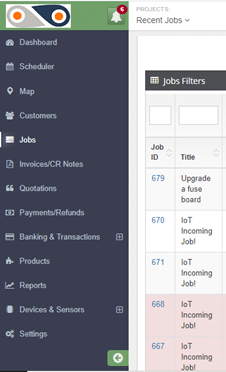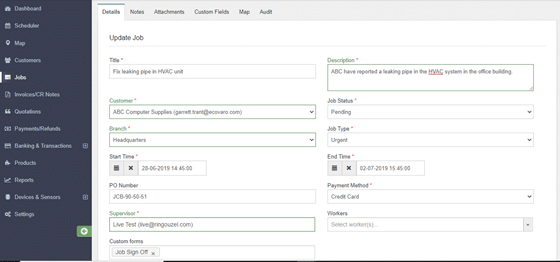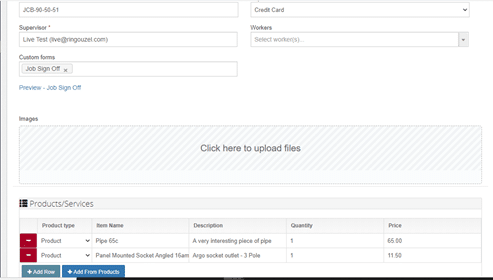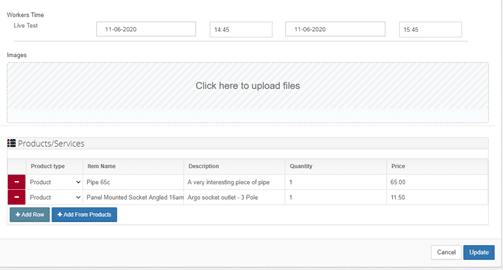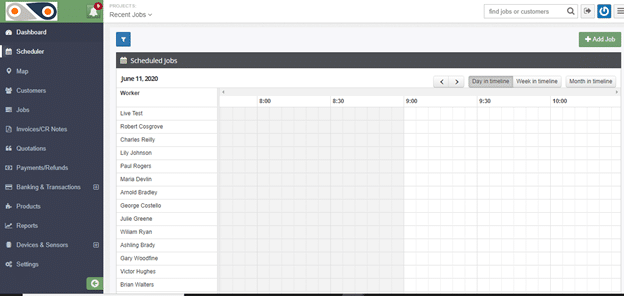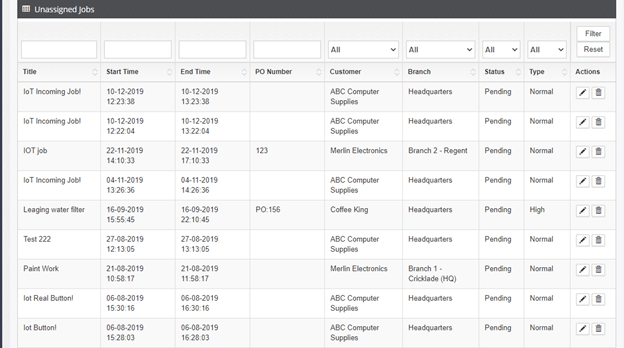The need to hire an electrician arises more often than we expect. It’s quite common to come across problems with structure-wiring, whether at home or in your business premises. It’s, therefore, not surprising to come across a home or a business owner in search of electrical services.
Whether a startup or a fully-fledged business that offers electrical services, there are challenges that come with running the venture. Where you have field service electricians, the challenges are even compounded, more so on matters of assigning tasks, receiving complaints from customers, and receiving field service reports.
As we all know, an electrical business isn’t just limited to the management of field service electricians. You’ll have to manage all the processes, a responsibility that can be quite daunting.
It doesn’t have to be difficult, though. You can take advantage of a field service management software program to make the entire management process effortless.
FieldElite is one such software. With FieldElite, you can assign tasks, communicate, and receive reports from your electricians on the go. Incorporating field service management in your electrical business enables you to run your business operations smoothly.
Below are some of the benefits of using FieldElite field service management software.
Increased Efficiency
Improved efficiency is the number one benefit electricians can get from field service management software. With FieldElite, electricians can accept jobs while in the field and add attachments together with client signatures using their smartphones or tablets. From the field management software, they can get information on the optimal route to the site, the tools required for the job, the service history of the customer, and contractual commitments.
Managing and scheduling tasks on FieldElite are just a few clicks away for office-based operators. That means reduced travel times and delays that often cripple workforce management.
Improved Professionalism
FieldElite field management software gives you a professional edge over your competitors. With this field management software, you can store all your business-related information in a central place. Therefore, each of your electricians can access the data from anywhere using their smartphone or tablet installed with the FieldElite mobile application. As such, there?s no breach in communication, and that means the electricians will get the scheduled tasks on time. Building such relationships with your team in the field encourages teamwork and motivates each team member to play their part. Again, since you can monitor what’s going on in the field, you can address the issues raised by your electricians or customers as soon as possible.
Effective Communication
Timely communication is very essential if you’re working with field technicians. Since you’ll not always be with them in the field, it’s always important to establish a proper communication channel to ensure information reaches them in time. With FieldElite field service management software, electricians receive notifications and details about tasks assigned to them via the FieldElite mobile app.
On the other hand, office-based staff can access the report with the details of the job once the electrician completes the given task. This implies that both the electricians and the office-based operators can get communication instantly, enabling them to see and manage their workloads. Individual electricians can close jobs on-site and proceed to the next task without having to do paperwork reporting. For this reason, electricians can complete multiple tasks within a short time, which improves their overall productivity.
High Accuracy
With FieldElite field service management software, missing data or incomplete information is a thing of the past. Electricians no longer have to deal with paperwork, which can be daunting and time-consuming, yet with a million and one errors. With FieldElite advanced mobile features, all field service processes and operations are automated. The electricians are left with quite little to do, and that minimises data entry errors.
Because the managers get real-time updates from the field techs, they can accurately maintain and track the field processes. With FieldElite mobile features, managers can get information regarding the job status, the actual time of arrival, and the time taken to complete the task. With such updates, the electricians are better placed to do the job well without wasting much time, thus improving their overall productivity.
Improved Co-ordination With The Team
Apart from improving the productivity of the electricians, FieldElite improves coordination with the entire management team. For instance, an electrician can be assigned new tasks within the same area where they’re currently assigned instead of sending another to complete a task in that same place. FieldElite makes this possible by always capturing the current location and job status.
Whenever a new request is made in an area, FieldElite first checks the database to confirm if there is an electrician already assigned in that area. If the status of the ongoing assignment is complete or almost complete and the new task request can wait for the remaining time, the electrician in the field would be assigned the new task. By doing so, the business saves on cost and time and minimises movements.
Improved Customer Satisfaction
As an electrician, you’ll only be satisfied if the service you offer makes the customer happy. Apart from fixing their wiring problems, they?d be happy if you responded quickly to their request. This is only made possible with field service management software. With FieldElite, managers can notify the electricians on the service requests in their respective areas, allowing them to respond to the call within a very short time. Not only does this give you some level of satisfaction as the business owner but it’s also a win for the company.
Make your field work-flow better with FieldElite, and improve the productivity of your electricians. With FieldElite releasing regular and timely updates, users aren’t left behind whenever there are changes in the field service industry. The updates introduce new features and capture new standards to ensure that you get the best experience with the software at all times.
